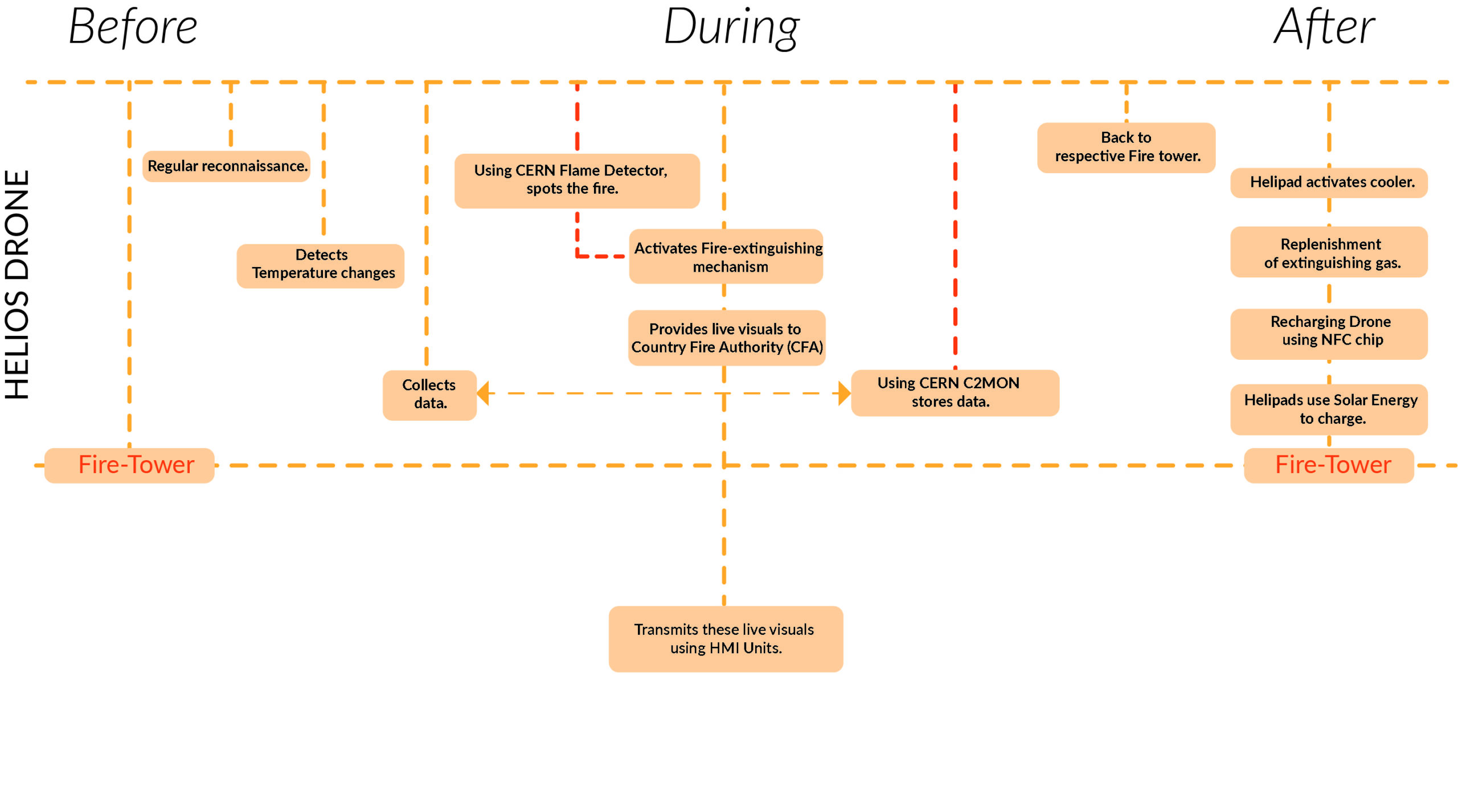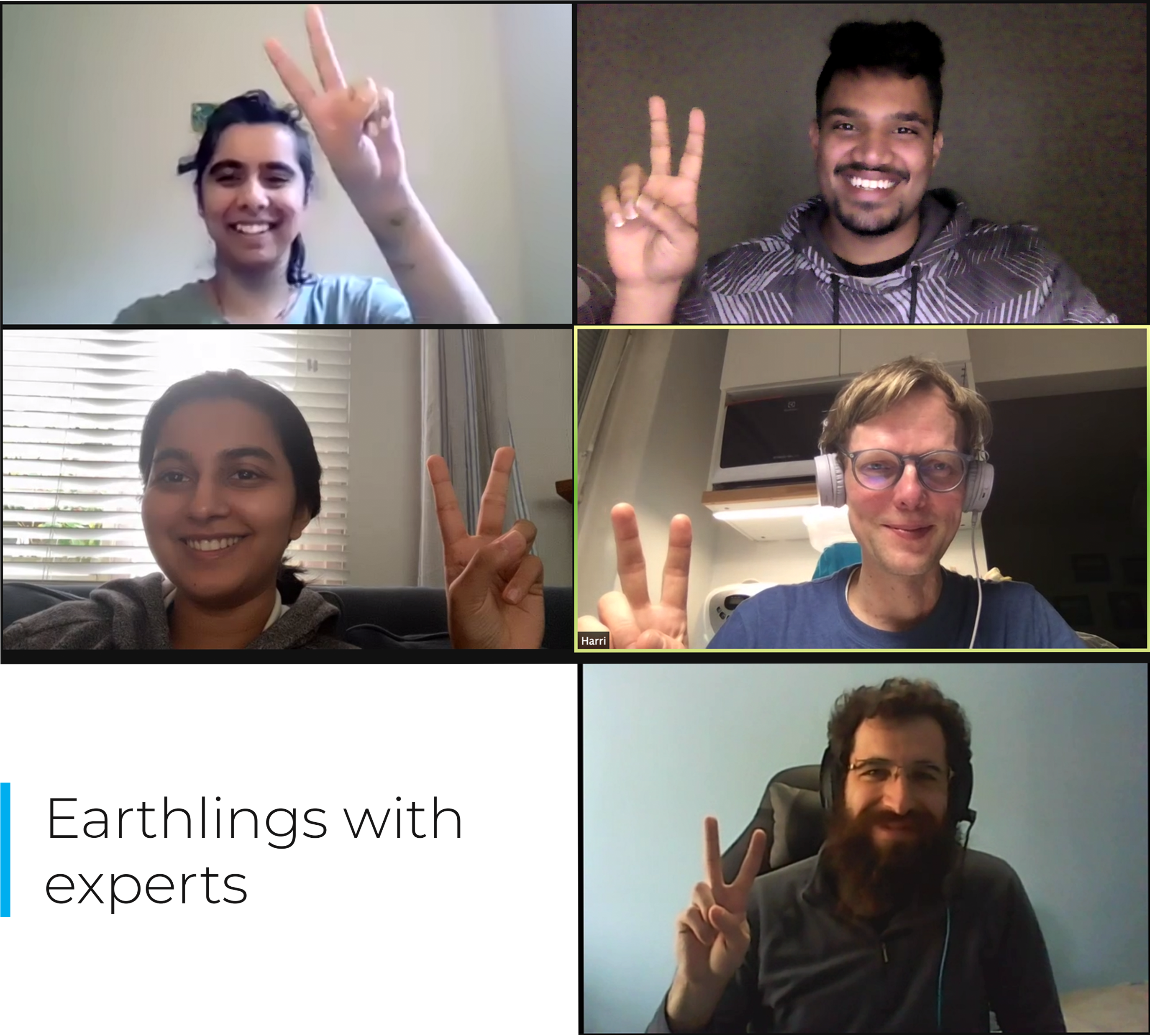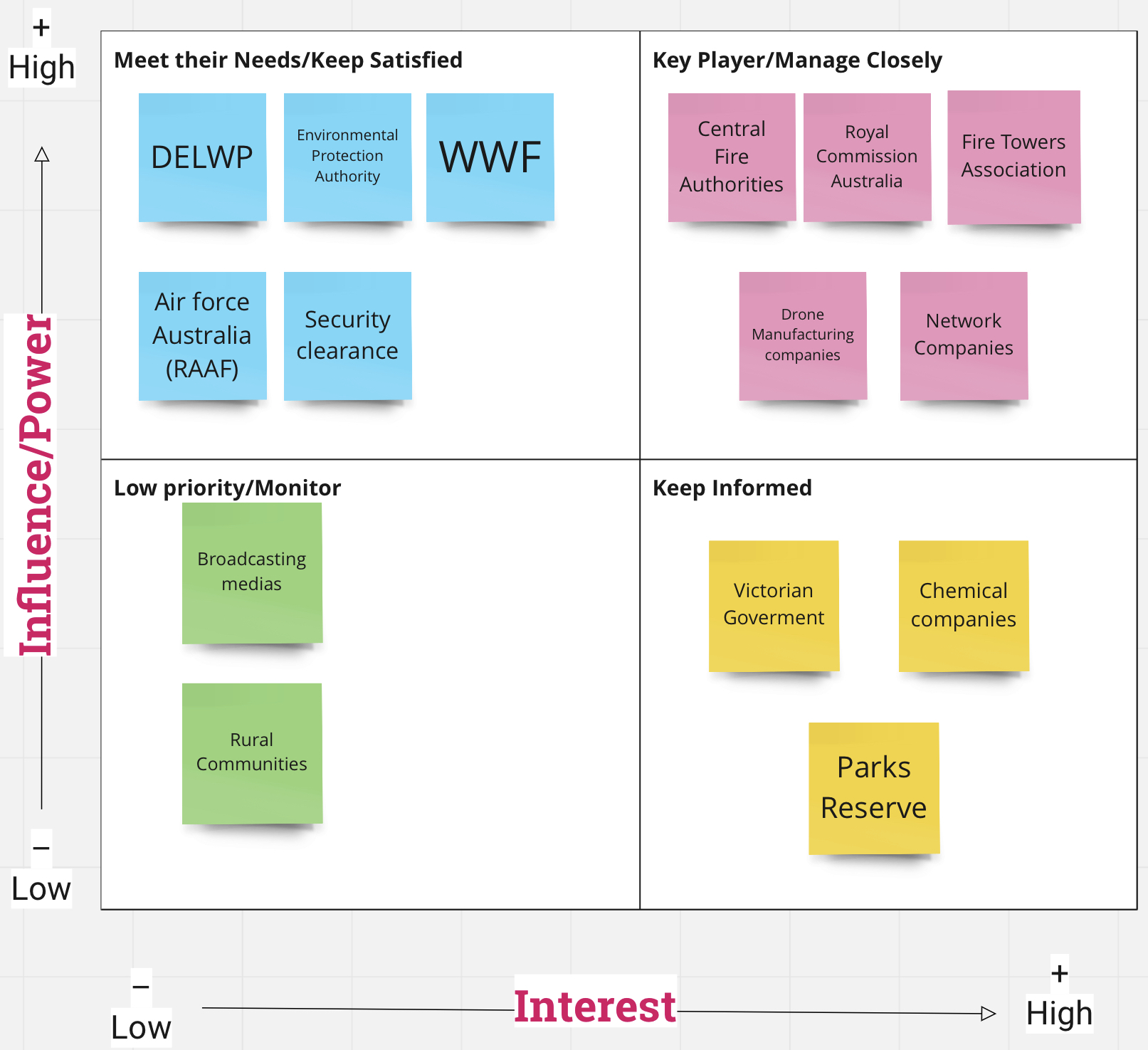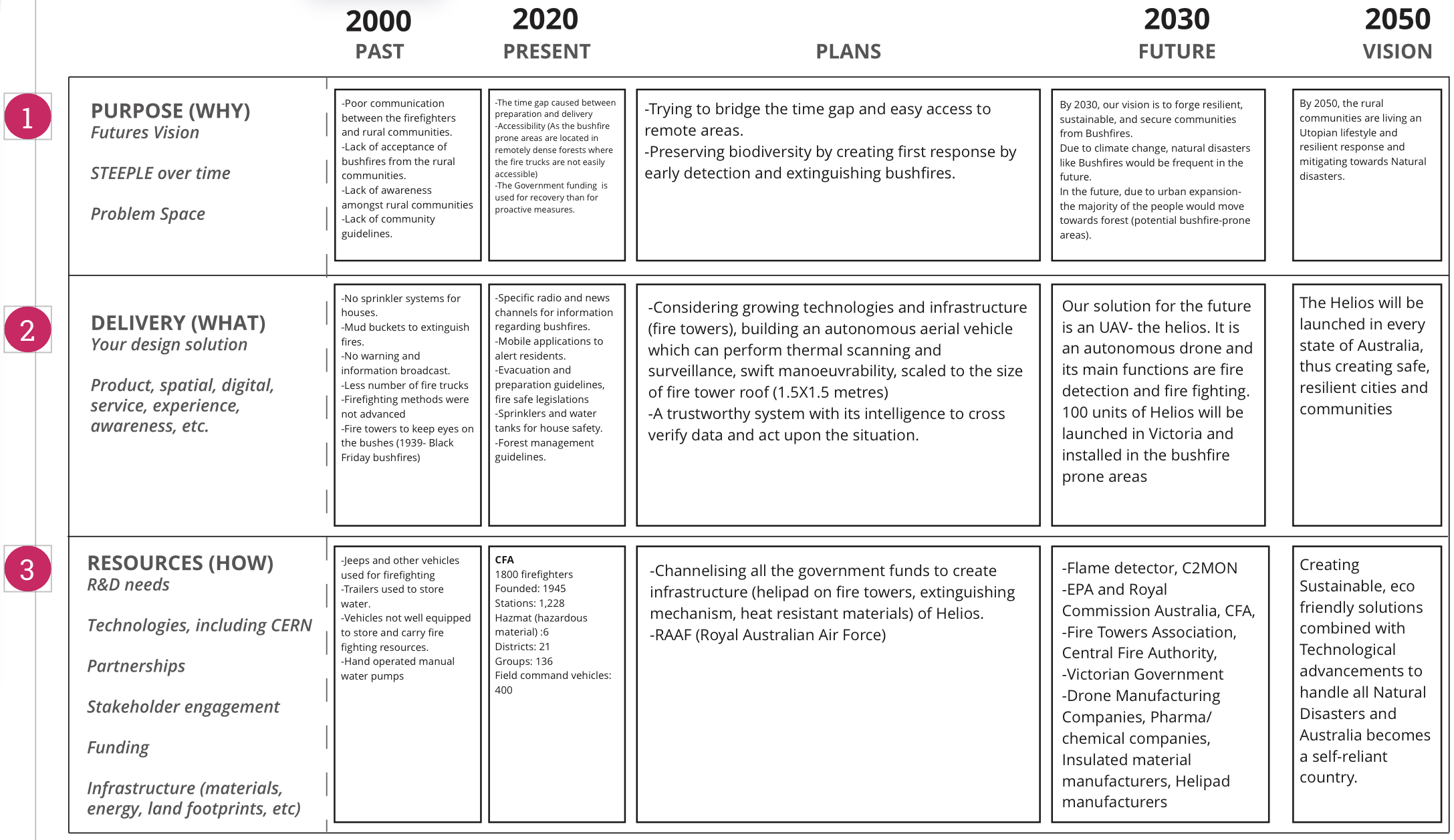Helios System
Since our pitch, we have critically dissected our idea and eliminated unnecessary functions, features and have been working specifically on extinguishing bushfires. Our primary focus is to improve the access to remote forest areas, bridge the time gap between detection of the bushfires and arrival of firefighters to act upon the situation and firefighting. The time gap results in the fires to spreading rapidly making it hard for ground support to take action. Hence, with our drone we worked on refining the fire extinguishing system using inert gases, which have minimal impact on the environment. Initially we started thinking about using carbon dioxide but, changed to nitrogen as it is efficient with removing latent heat and also creates asphyxiation causing the fire to die out. Additionally, we discovered a few concerns regarding the range of the flame detector and pitched our development to Georgios & Harri, our coaches from CERN.
Helios system- Journey map

Birds eye view of Helios

The Circuit Board

CERN Coach advice and consideration
After pitching our development, with coaches at CERN we learned that the idea of using cryogenic gases like nitrogen can be harder to store but can be efficient towards a fire. The challenge is to contain and store these cryogenic gases as they can evaporate due to their nature of boiling in very low temperature. Hence, as a part of our mechanism we explored the various vacuum sealed storages for gases, dewars for cryogenic liquids and how they can be incorporated as part of the extinguishing mechanism.
Additionally, the coaches suggested to look into network source and strength required for the kind of data, our drone is designed to transmit. Taking this feedback on board, we worked out the specific technology required to achieve data transmission and transfer good quality visuals from surveillance.
Team Snapshot

Stakeholder engagement
As we were working on design details and components, we identified our crucial stakeholders and strategized ways to engage them with our end-result. Our main stakeholders are Royal Commission of Australia, Country Fire Authority (CFA), Fire tower Operators, and Drone manufacturing companies. Since Royal Commission of Australia provides finances to CFA, our focus is to enhance the values that our product shall provide directed specifically towards CFA and beneficial to other stakeholders.
To procure resources like manufacturing material, finance, and extinguishing chemicals, we need to keep other stakeholders informed about our developments. Additional stakeholders for our system are Chemical Industries, Environmental Protection Authority (EPA), Victorian Government and Air Force Australia (RAAF). As a part of our implementation plan, we are looking into various strategies like conducting Co-design workshops, seminars and marketing campaigns to connect with our potential stakeholders.
Stakeholder priority graph

Implementation plan
Our vision for 2030 is to create resilient, sustainable, and secure communities from Bushfires. To achieve our speculated vision, our idea is to install 100 units of Helios including human machine interface (HMI) unit across 74 Fire-towers Victoria. Considering how technologies and infrastructure would grow by the year 2030, this autonomous aerial vehicle would act as a security system for disaster management in forests. This system is designed to provide reliable information to the concerned authority and is assigned with a processor to receive commands, perform set tasks and to act upon the situation.
With our idea of using the existing infrastructure, we plan to channelize all the government funding towards disaster mitigation, as to recovery. Further, these finances would be divided in covering the costs of manufacturing the drone and executing the design. In order to secure and license the whole system, it is essential to get a clearance from Royal Australian Air force (RAAF).
Implementation roadmap

Highlight of the week:
In Rapid prototyping activity this week through cross-team collaboration, we worked on creating an extinguishing and replenishing mechanism. The inspiration for the system was taken from fueling air-borne planes. This idea sparked more creativity and clarity towards our extinguishing system for the drone.
Prototype of the extinguishing mechanism in Helios

Next Steps
Our next step is to start prototyping Helios and internal components. Here we also need to work on aesthetically balancing our drone against natural elements that can affect the flight. Secondly, to delve more into how can we combine cryogenic gases to effectively extinguish fires.
Quote of the week
“The important thing is to never stop questioning.”
Albert Einstein

Recent Comments